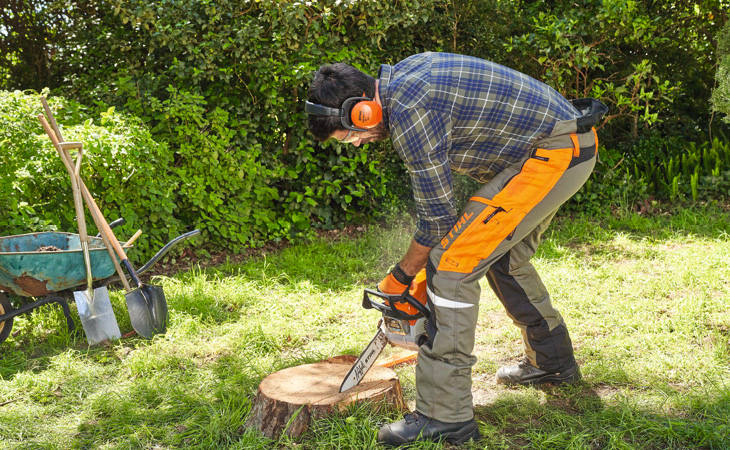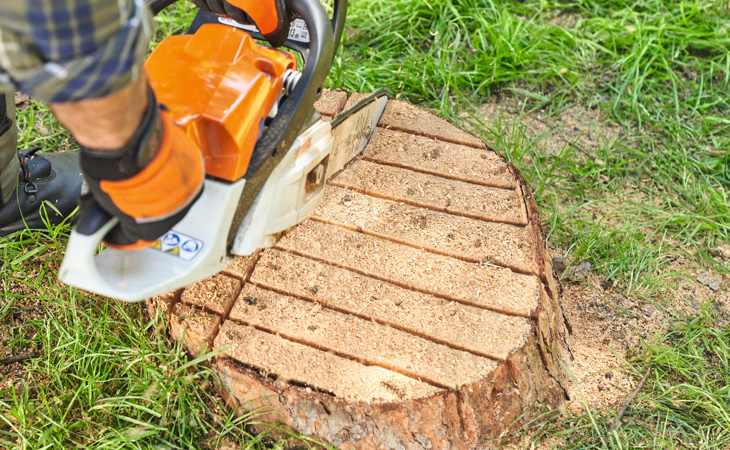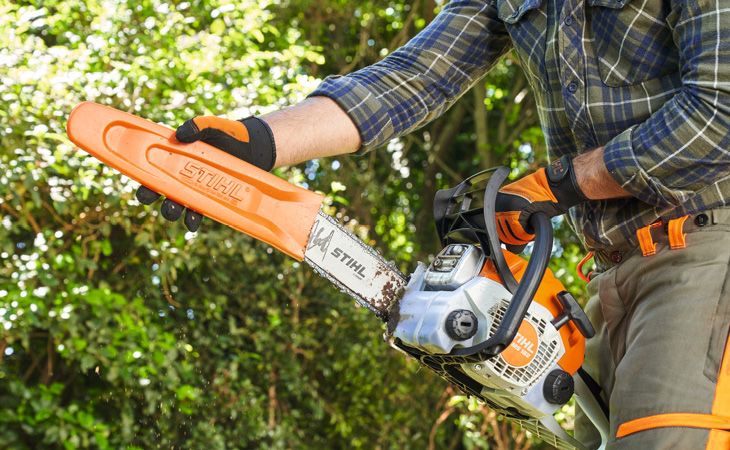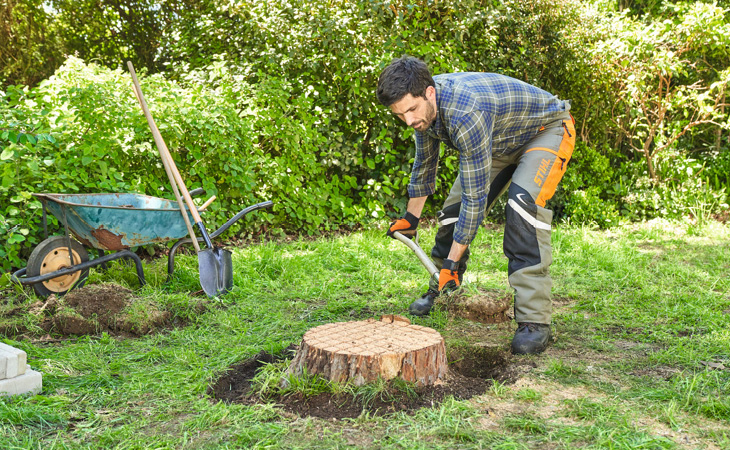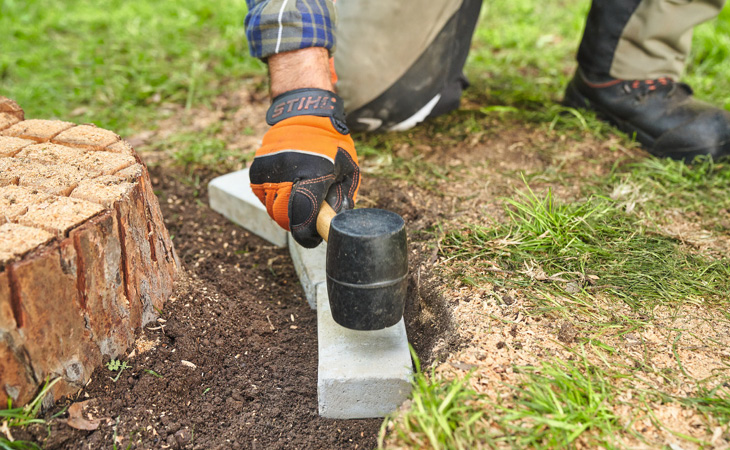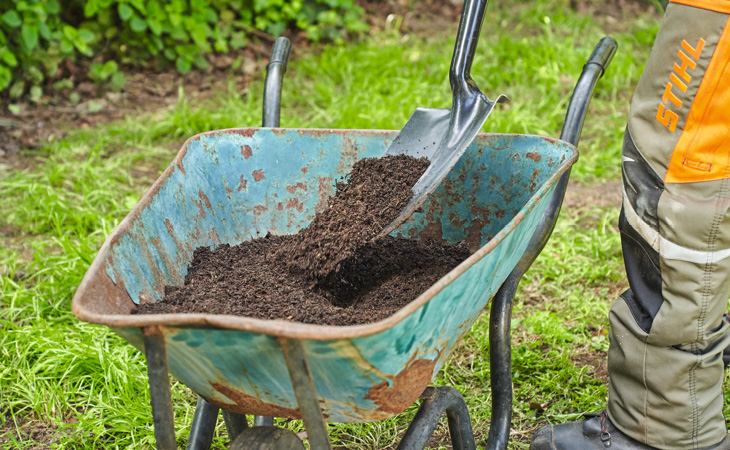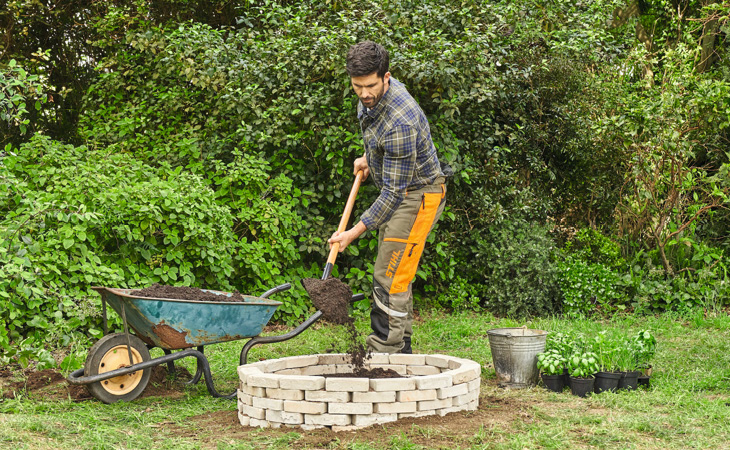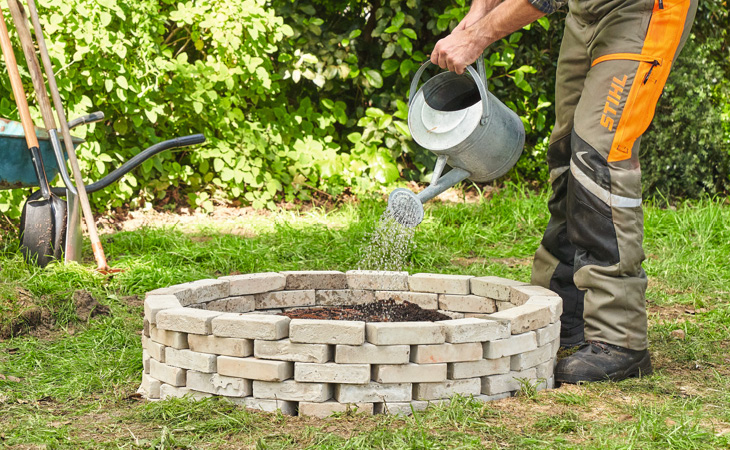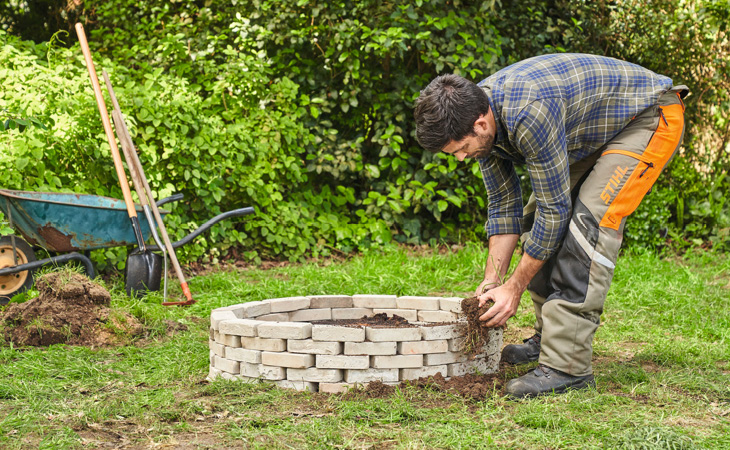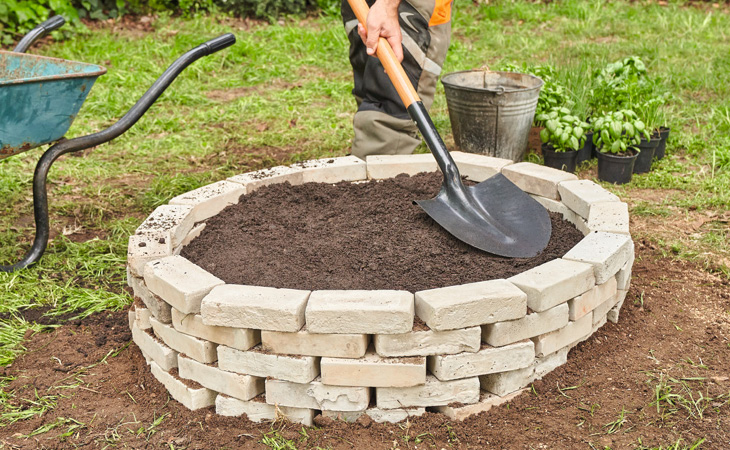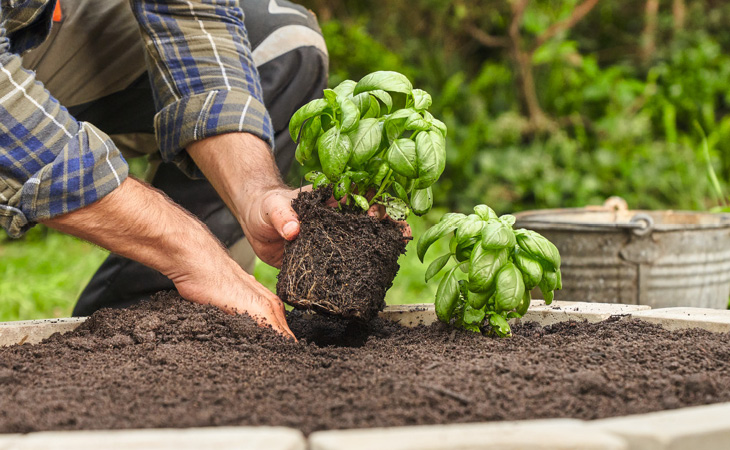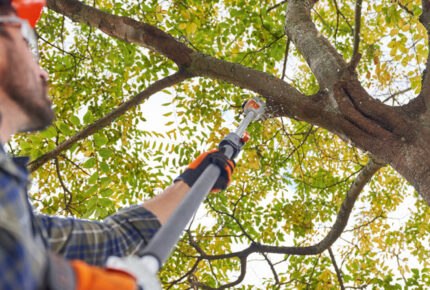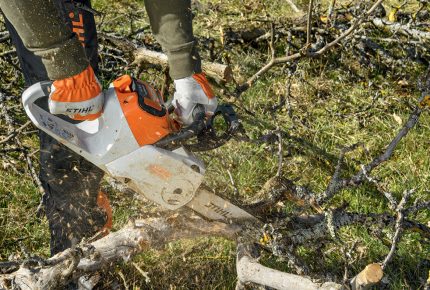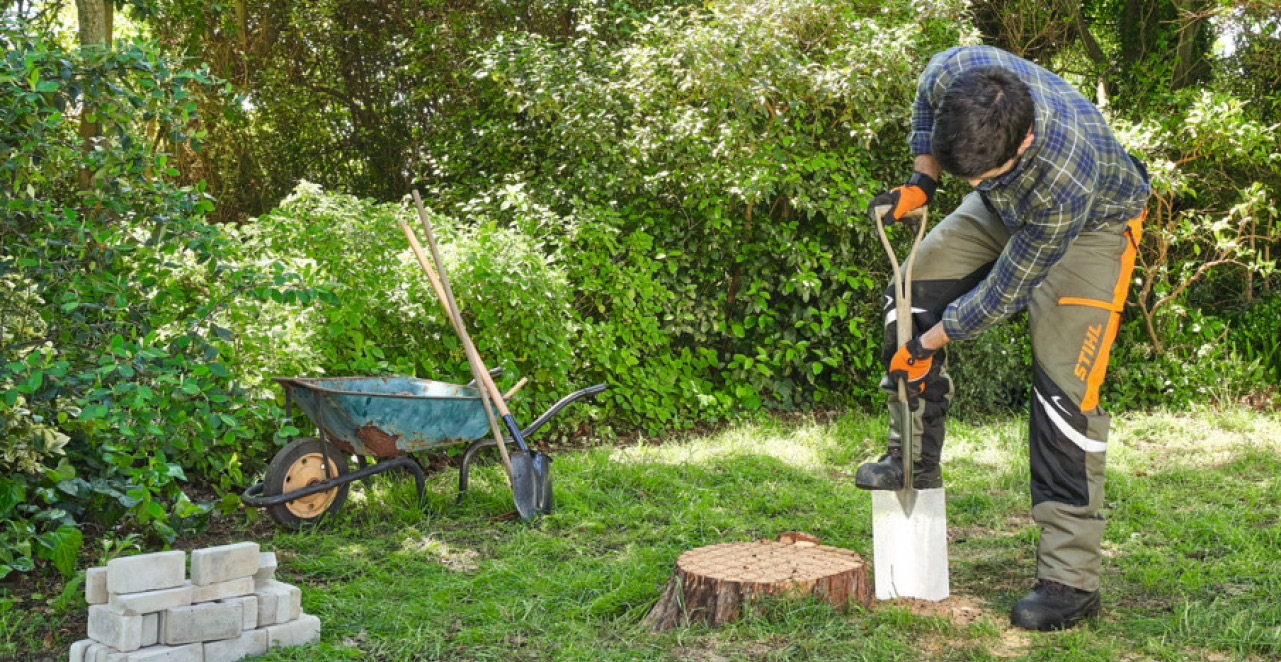
#How To
COMPOST A TREE STUMP, CREATE A FLOWER BED
So, you’ve just removed that rotten or ill tree in your yard. But what do you do with the tree stump?
Extraction of the stump can be difficult, time-consuming – not to mention, expensive. And simply leaving it there is not only unsightly, but also potentially hazardous.
So why not flaunt the imperfection by giving your tree stump a second career as a temporary garden bed bordered with stones for blooming summer flowers or fresh herbs?
Transforming your tree stump not only creates a unique feature for your garden, but it also assists in the breaking down of the tree stump.
Depending on the size and type of wood, your tree stump will decompose in about four to six years, or at least be rotten enough to be shovelled away with a spade.
It’s best to process the tree stump while it is still fresh. However, the following method works at any time.
Before you start, here’s what you’ll need:
Materials
- Compost
- Compost accelerator
- Organic garden fertilizer
- Flower or garden soil
- Bricks, natural stones or flat quarry stones, which are also used for dry stone walls
- Plants: you may select from summer flowers, herbs or hardy cushion perennials and ground covers
- Bucket for dipping the plants
Garden devices and tools
- A chainsaw such as the STIHL MSA 140 C-B
- Personal protective equipment (PPE): gloves, safety goggles, cut-protection trousers, chainsaw boots, hearing protection when using gasoline chainsaws
- Wheelbarrow
- Scoop
- Spade
- Rubber mallet
- Watering can
- Metal rake
Chainsaw time: Scoring the tree stump.
To speed up the decomposing process, we need to score the wood using your preferred chainsaw from the STIHL chainsaw range. Battery and Petrol Chainsaws alike are ideal, with the MSA 120 C-B, MSA 140 C-B, MS 170 & MS 180 all providing the power, precision and performance to make this first step easy and rewarding.
Before operating your chainsaw, make sure you are wearing the correct protective wear. Steel toecap boots, cut-protection trousers, cut-protection gloves and protective goggles are recommended, and for those using a petrol chainsaw, protective earmuffs will also be required.
Sawing into the wood
Stand firmly and securely, but slightly offset in front of the tree stump so that your leg is not in extension of the saw line.
Guide the chainsaw through the wood so that it cuts with the underside of the guide bar with the chain running in. Don’t push the chainsaw forward or stab it into the wood, as this risks the chainsaw kicking up uncontrollably.
Sawing a grid of slots
Begin by scoring the wood in a grid pattern, with approximately 5cm between each cut.
We want to cut as deep as possible but need to be mindful of the proximity of the stump to the ground, especially at the edges of the tree stump. If the saw touches the ground, the chain will be blunt immediately. To saw the slots in the middle of the trunk deeper, cut into the slot a second time.
Finishing with the chainsaw
As soon as you’ve made your final cut, activate the chain brake and put the chain scabbard on.
Digging a trench
Next, use the spade to dig a shallow trench around the tree stump. Close to the stump, the tree roots still run just below the surface, so dig the trench approximately 20 to 30 cm from the trunk. The bottom of the trench needs to be approximately horizontal so that the stones have a level supporting surface – even on an uneven terrain. Make sure that the trench is slightly wider than the stones you are going to be using.
Preparing the ground
Since the garden bed we are creating is only intended for the time that the tree stump needs to rot – about 4 to 6 years – the stones can simply be hammered directly into the ground. Slight irregularities are not a problem. If the soil is very loose, tamp it down with a hammer first. If the ground is firmer, you can lay one stone at a time in the trench and tap the stones of the lowest row into place with the rubber mallet.
Laying the stones
Lay the remaining stones loosely on top of each other, slightly offset, as in a dry-stone wall. So that rainwater or irrigation water can run off through the joints between the stones, these are not mortared. The stone wall should be about 10 cm taller than the stump. This allows the flowers or herbs being planted to have sufficient root space.
Tip: Which stones?
Because they will be using their own weight to hold, the stones you choose to build your garden bed should have a flat supporting surface and not be too light. The stones need to stack well, so it’s best that they have flat top and bottom surfaces. Leftover bricks from other projects such as dry-stone walls, paving or bed edging are great for this project.
Compost mixing
In the wheelbarrow, mix the sieved compost, organic garden fertilizer for 0.5 square meters (follow the quantities on the instructions) and a handful of compost accelerator.
Filling the bed
Shovel most of the mix from the wheelbarrow onto the tree stump. Use the rake to carefully push the mix into the gaps between the stones as well.
Sprinkling
Water the soil over the stump and then add the remaining compost mixture to the stump.
Fixing the stones
To stabilise the stones of the lower rows laterally, take some soil from your previously cut out sod, and fill it into the narrow gap between the lower part of the garden bed wall and lawn and tread it down.
Filling the garden bed
Now fill the stone border completely with potting soil. Pull it smooth with the rake and tap it lightly with the shovel.
Planting
Submerge the plants, including the pot, in a bucket of water until no more air bubbles rise. Then remove the plants from the pot. Drawing planting holes in the soil by hand, insert the plants and press the soil down around the plants. After that, you can water well.
Tip: Which plants are suitable?
All plants that love nutritious soil are suitable.
For sunny locations, you can try bedding and balcony flowers such as geraniums, petunias, daisies or herbs such as basil, parsley, tarragon, chives.
Fuchsias, impatiens walleriana or begonias are suitable for shady areas.
Hardy groundcovers such as cranesbill or ivy flower are also suitable. If planting groundcover is your preference, having 5 cm of soil above the trunk is sufficient: fill the stone border with garden soil instead of potting soil, plant the perennials close to the stone border and simply guide the long tendrils of the plants towards the stump.
Keep it simple
If you want to make things even simpler, simply leave the tree stump and utilise it as a garden element: as a storage space for a beautiful flowerpot, or as a location for a bird bath in summer and a bird feeder in winter – these are both beautiful options and will attract local fauna to your garden.
The only place to see the STIHL range of chainsaws, premium fuels, solvents and lubricants, quality PPE gear and expert advice and service, your local STIHL dealer has everything you need. To find your local store, visit stihldealers.com.au.

